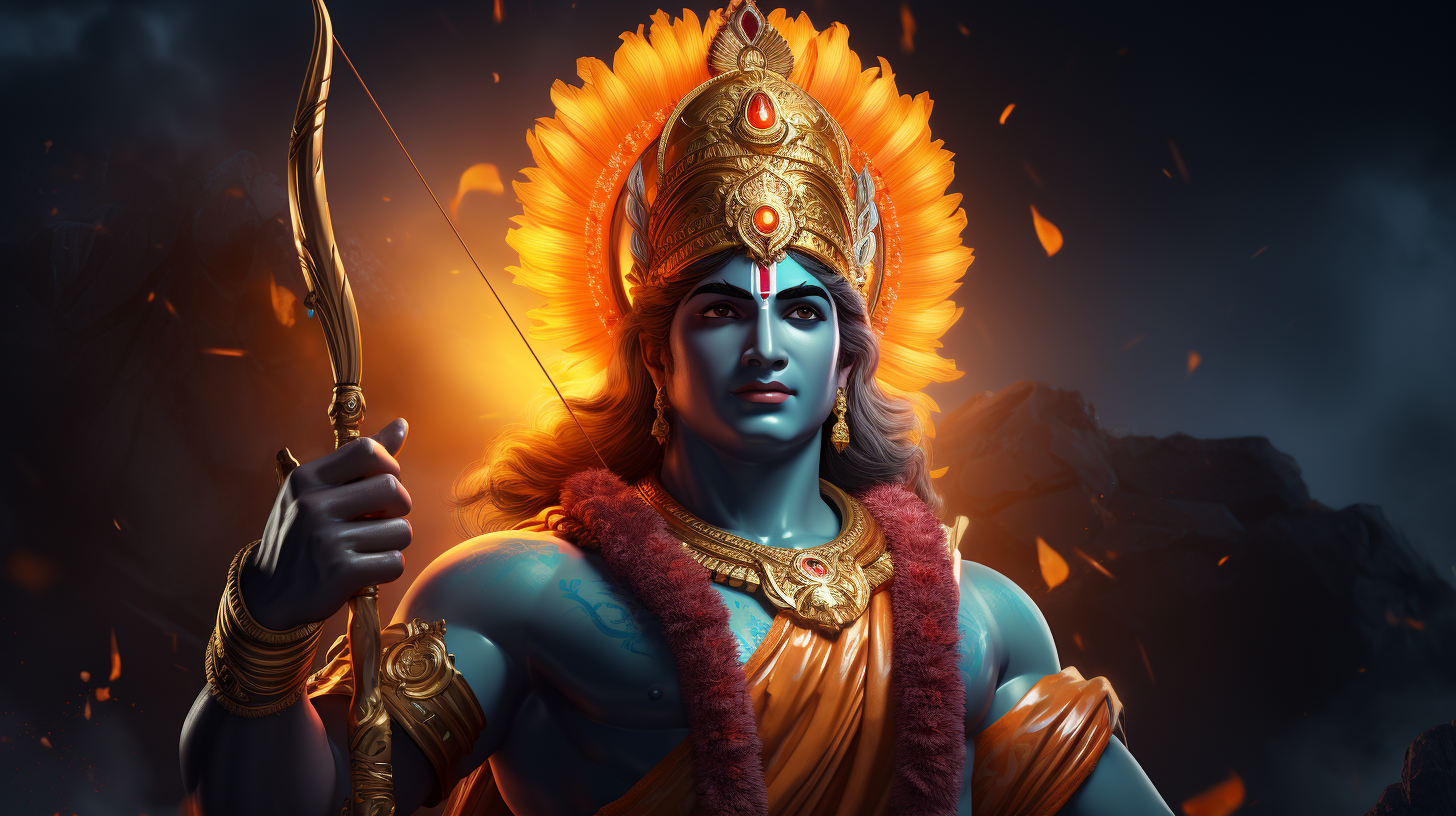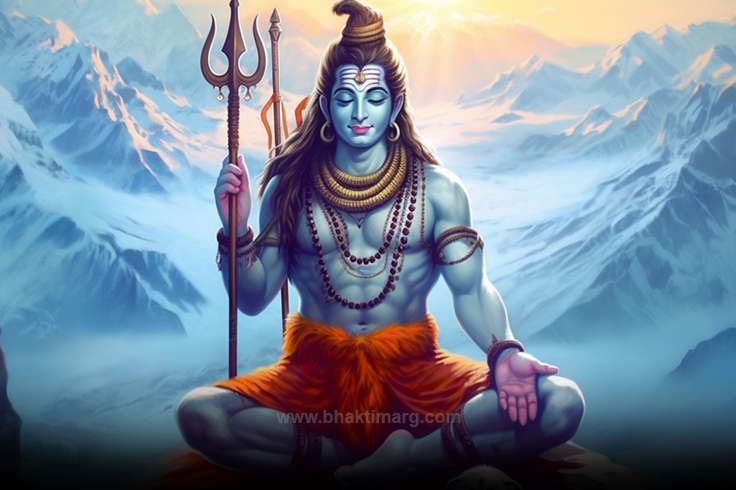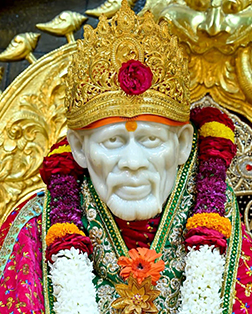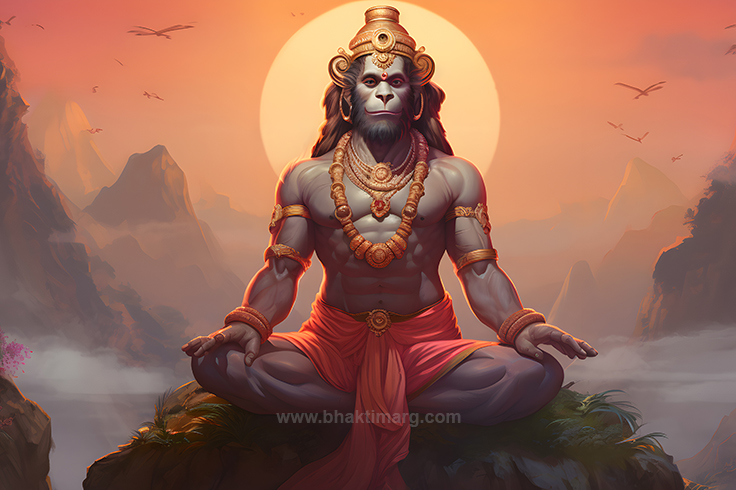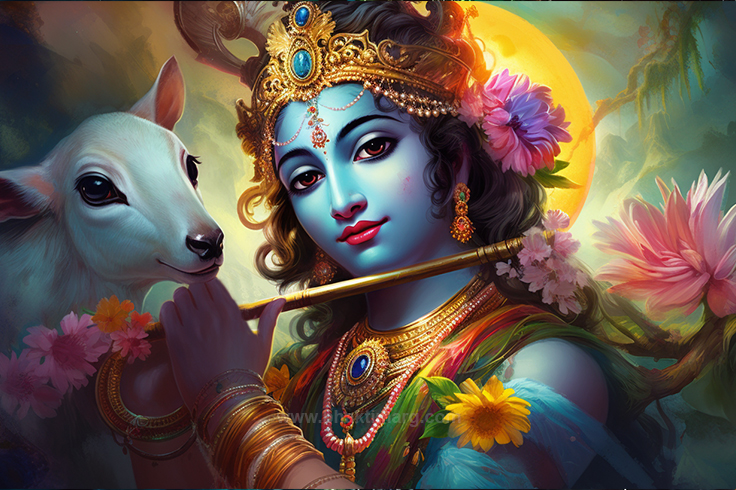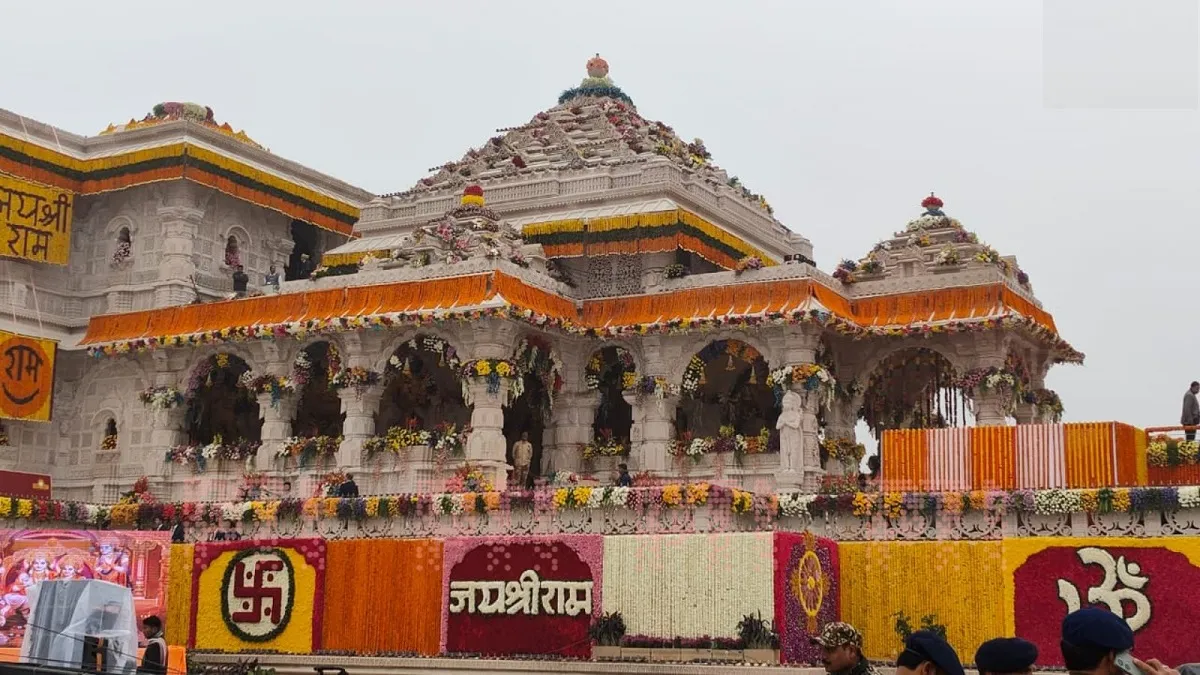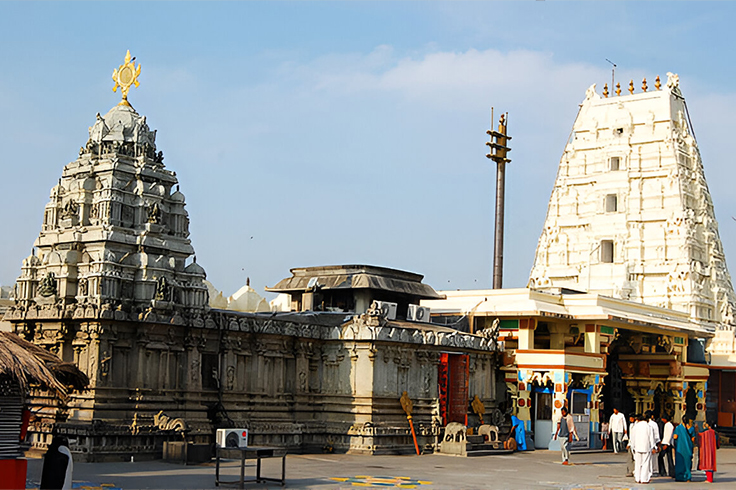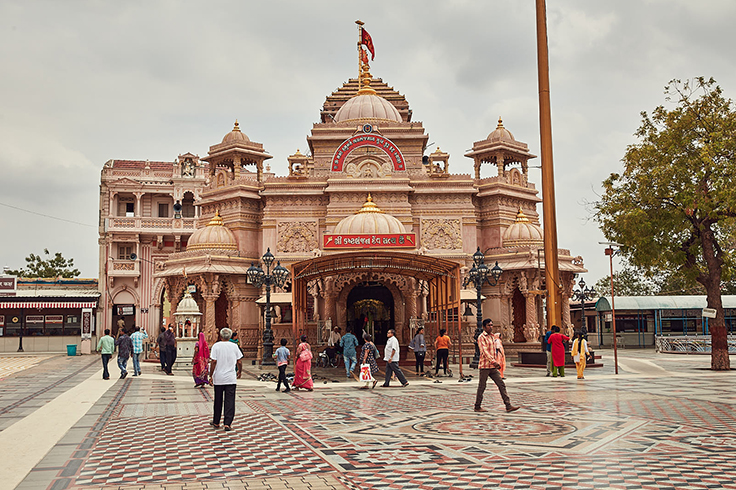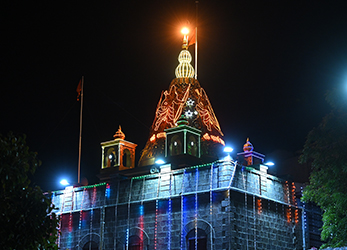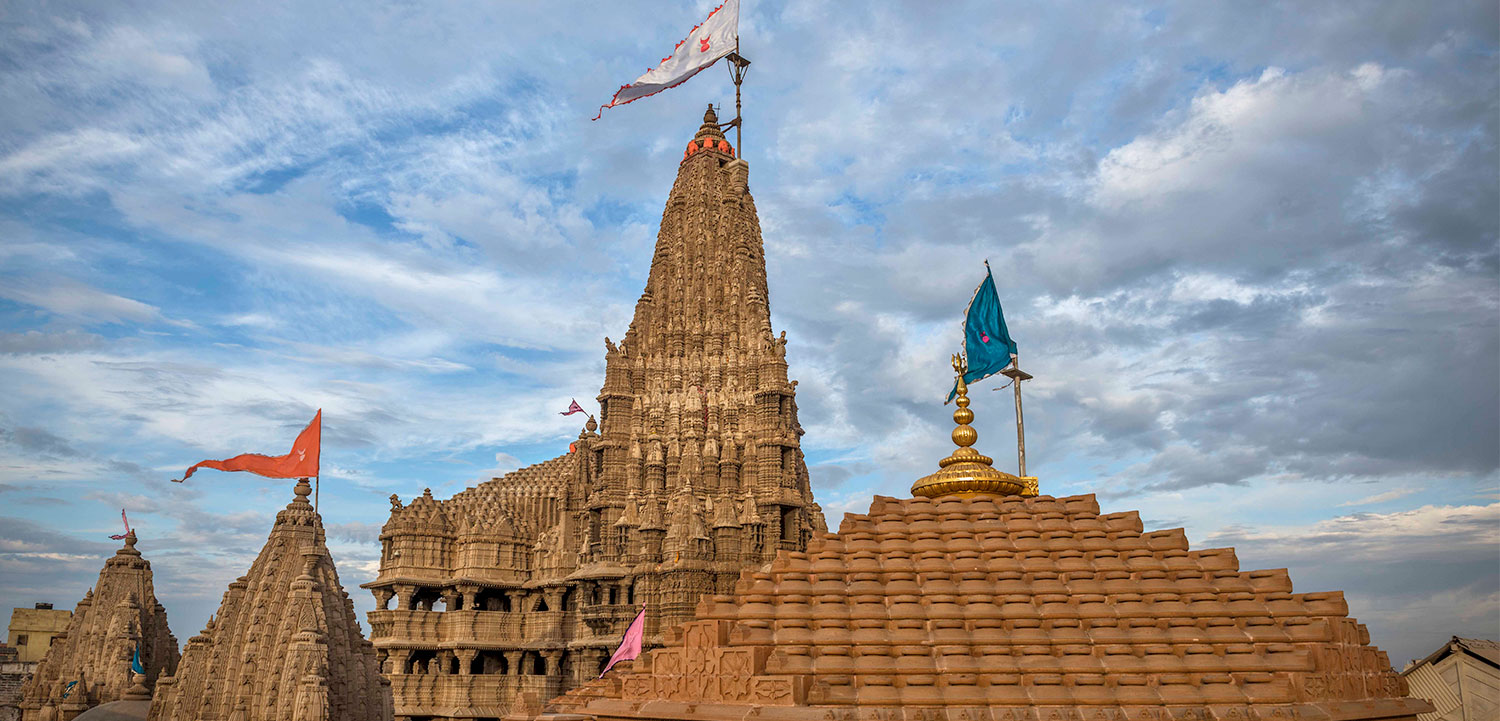
The Origins of the Samudra Manthan: How the Story Began
In Hinduism, various instances are noted as important in mortal existence, and the Samudra Manthan story is one such legend. Samudra Manthan which translates to the churning of the ocean of milk, is one of the most captivating and symbolic tales in Hindu scriptures. It reflects the eternal struggle between good and evil, the pursuit of immortality, and the balance of cosmic forces. This event had an attendance of all the gods and goddesses along with demons and other creatures, serving as an allegory for life’s trials and the pursuit of enlightenment.
But how did this iconic event come to pass, and what were its origins? In this blog, let’s dive into the history of Samudra Manthan and what can one learn from it.
The Disappearance of Shree (Laxmi):
The Vishnu Puran Sagar Manthan is described in detail in the scripture explaining what happened and how it started. The Samudra Manthan story begins with a pivotal problem arising when the world was devoid of Shree the Laxmi due to an instance. Devas ruled the heavens led by Indra, the king of the gods, and the gods and Asuras that were engaged in a perpetual struggle. The demons who sought to overthrow them and claim supremacy over the universe. The Devas and Asuras were constantly at odds, representing the forces of good and evil, respectively.
The turning point in this constant struggle came when the sage Durvasa, known for his volatile temper, played a significant role in the downfall of the gods. One day, Durvasa was walking along and encountered Indra. In a gesture of goodwill, he presented the king of the gods with a divine garland, a gift of the great spiritual power of the Laxmi, and a representation of fortune. Indra, however, placed the garland on his elephant, Airavata, irritated due to the bees, trampled on the garland, dishonoring the sage. With this Goddess Laxmi vanished from the world this disrespect enraged Durvasa and he cursed Indra and the Devas, stripping them of their power, fortune, and strength.
This curse left the Devas vulnerable to the ever-opportunistic Asuras, and with their strength diminished and their hold on the heavens threatened. Taking this opportunity the Asuras attacked Devas and overtook three worlds, the Devas found themselves desperate for a solution to regain their power and immortality.

Reclaiming World Wealth and The Search for Amrita
In their weakened state, the Devas sought the counsel of Lord Vishnu, the preserver of the universe. Vishnu advised them that the only way to restore their strength and immortality was to obtain Amrita, the nectar of immortality, which was hidden deep within the Ksheer Sagar, or the eternal Ocean of Milk. But it was not an easy task to extract this nectar; it required an immense churning of the ocean to bring forth the hidden treasures, including Amrita.
Recognizing the enormity of the task, Vishnu suggested that the Devas join forces with their sworn enemies, the Asuras, to churn the ocean together. In return for their cooperation, Vishnu promised the Asuras that they, too, would receive a share of the Amrita, although he had his plan for ensuring that the nectar would remain in the hands of the gods. Reluctantly, the Devas and Asuras agreed to the alliance, knowing they needed all the strength to accomplish the monumental task. The Asuras, motivated by the prospect of attaining immortality, eagerly agreed to join forces with the gods, despite their inherent distrust of one another.
The Churning of The Ocean of Milk: Samudra Manthan Story Begins
With the alliance between the Devas and Asuras in place, preparations for the churning of the ocean began. But for churning two key elements were needed a churning rod and a rope to stir the ocean of milk.
- To act as a churning rod none other than Mount Mandara was decided, it was a massive, immovable mountain that symbolized stability and the axis of the cosmos. This mountain was selected to be the center of the churning process, but moving it into the ocean was no small feat. Lord Vishnu, in his Kurma (turtle) avatar, came to the rescue by supporting the mountain on his back once it was placed in the ocean, ensuring it wouldn’t sink
- The rope to churn the ocean was the king of serpents, Vasuki, Bholenaath’s favorite which he wore as garland. He agreed to allow himself to be used in this grand endeavor. The Devas took hold of one end of Vasuki, while the Asuras grabbed the other end, and they began the arduous process of churning the ocean
The Treasures Obtained from Churning of The Ocean of Milk
As the Devas and Asuras churned the ocean, a series of miraculous and divine objects began to emerge from its depths. The first substance to rise, however, was not treasure but poison
- Halahala, it deadly poison, was the first to surface from the churning that threatened to destroy the universe, as it spread and filled the air with its toxic fumes. The gods and Asuras were filled with panic, unsure of how to stop this impending catastrophe. In this moment of crisis, Lord Bholenaath, the great destroyer and protector, stepped forward. He drank the poison to save the world, but at the request of his consort, Goddess Parvati, he held it in his throat, which turned blue as a result. This earned him the name Neelkantha symbolizing his immense power and sacrifice. Once the poison was contained, the churning continued, and several divine treasures began to emerge
- Kamadhenu, the celestial cow that grants all wishes
- Uchhaishravas, a seven-headed divine horse
- Apsara, the divine damsel like Rambha, Menaka, and Urvashi who choose Gandharva as their companions
- Airavata, a magnificent white elephant
- Kalpavriksha is a divine wish-fulfilling tree
- Chandra, the crescent moon adored on Shiv ji’s head
- Panchajanya, the divine conch of Lord Vishnu
- Lakshmi, the goddess of wealth and prosperity, eventually chose Vishnu as her consort
- Dhanvantari, the divine physician, rose from the ocean holding a pot of Amrita, the nectar of immortality
- Kastubha is a rare and precious gem that adorned Lord Vishnu
- Jyeshta or Alaxmi, the goddess of misfortune
- Nidradevi, the goddess of sleep
- Amrita, the nectar of immortality can at last which was to be distributed equally among Devas and Asuras

 Treasures obtained from the Samudra Manthan Lord Shiva drinking the deadly Halahala poison
Treasures obtained from the Samudra Manthan Lord Shiva drinking the deadly Halahala poison
Samudra Manthan Story: The Final Conflict
Finally, when the pot of Amrita emerged from the churning of the ocean of milk, the long-anticipated moment had arrived. Both the Devas and the Asuras were eager to claim the nectar for themselves. The Vishnu Puran Sagar Manthan depicts that Lord Vishnu had foreseen the Asuras’ intention to take control of the nectar and deny the Devas their share.
To prevent this, Vishnu assumed the form of Mohini, a beautiful enchantress, to distract the Asuras. Mesmerized by her beauty, the Asuras willingly gave her the pot of Amrita, believing she would distribute it fairly. However, Mohini instead served the nectar only to the Devas, ensuring their immortality and the restoration of their strength. By the time the Asuras realized they had been deceived, it was too late. One of the Asuras, Rahu, disguised himself as a Deva and attempted to drink the Amrita. However, before he could consume it fully, the sun god Surya and the moon god Chandra alerted Vishnu, who swiftly decapitated Rahu. Since Rahu had already tasted the nectar, his head remained immortal, and he continued to pursue the sun and moon in the cosmos, causing eclipses when he caught them.
This history of Samudra Manthan is an enduring symbolism and a profound metaphor for life not just a tale of gods and demons. The churning of the ocean milk represents the struggles and challenges we face in our pursuit of wisdom, balance, and enlightenment. The emergence of both poison and nectar from the churning reminds us that life brings both obstacles and rewards, and it is through perseverance and inner strength that we can overcome difficulties and attain our ultimate goals.
Read more blogs:




